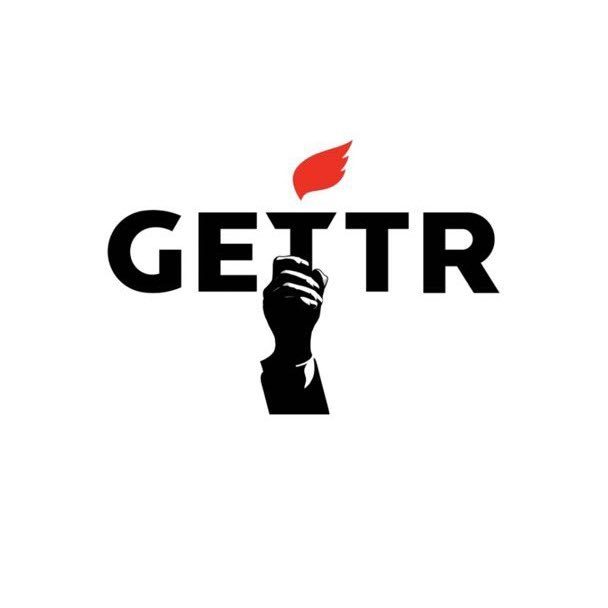A Quick, No BS Guide to Buying Cryptocurrency

I am writing this to help people be safe when investing, not suggesting they do invest in the cryptocurrency market. In fact, I would suggest not investing in it and investing in traditional investments. Cryptocurrency investing is a bad way to invest because of the lack of long-term measurements and the high volatility of the overall market. If you want to invest, I suggest a licensed advisor, preferably someone with a CFA or CFP behind their names. I will even add legal disclaimers next.
Disclaimer 1: I am not a licensed financial advisor and the information provided is for general informational purposes only. It should not be considered as financial advice. You are encouraged to consult with a qualified professional for advice tailored to your individual circumstances before making any financial decisions. I disclaim any responsibility for any actions taken or not taken based on the information provided.
Disclaimer 2: Some links in this content may be affiliate links. If you click on these links and make a purchase, I may receive a commission at no additional cost to you. I only recommend products or services that I believe in and use personally. Your support through these links helps me maintain and provide content on this platform. Please be aware that I am not responsible for the content or privacy practices of external websites linked from this piece.
Now that’s been taken care of!
If you’re still here, I’ll assume you’re a greedy little shit wanting to win the cryptocurrency lottery. At this point, it’s a matter of when, not if, Blackrock gets to create a Bitcoin ETF. If that happens, other companies will issue their own ETFs and institutional investments stabilize markets. An Exchange-Traded Fund (ETF): is a type of investment fund and exchange-traded product, representing a basket of assets such as stocks, bonds, or commodities. ETFs are traded on stock exchanges, allowing investors to buy or sell shares throughout the trading day at market prices. They offer diversification and are designed to track the performance of an underlying index, commodity, or a basket of assets. ETFs provide a way for investors to gain exposure to various markets or sectors without directly owning the individual assets in the fund. Shout out to ChatGTP for the definition and good explanation of what an ETF is.
In this my goal is to help you, the reader, not get scammed. I will give a list of cryptocurrency exchanges I believe in, a list of cryptocurrencies that I would consider buying with a bit of background information on each of them, and sites to do research on for your cryptocurrencies of choice. I will include notes of my personal opinions throughout. Most importantly, I am not hanging you out to dry. With a little bit of attention to detail while doing it yourself, I have every bit of faith in you that you will be able to handle your own transactions. That goes for anyone reading this.
Important Terms.
I assume, if you’re reading this, you know what a cryptocurrency is, but perhaps that is not the case.
Cryptocurrency: Cryptocurrency is a form of digital or virtual currency that uses cryptography for security and operates on decentralized networks, typically based on blockchain technology. Unlike traditional currencies issued by governments and central banks, cryptocurrencies rely on a distributed ledger, the blockchain, to record and verify transactions. That’s a lot of fancy words and our goal is to learn fundamentals today so let’s break the definition down.
Cryptography: Cryptography is the practice and study of techniques for securing communication and data from adversaries or third parties. It involves the use of mathematical algorithms to encrypt information, making it unreadable without the appropriate key to decrypt it. Cryptography plays a crucial role in ensuring the confidentiality, integrity, and authenticity of data in various digital communications, including secure messaging, online transactions, and information storage. This field encompasses a range of cryptographic methods, such as symmetric key encryption, public-key encryption, digital signatures, and hash functions, contributing to the development of secure communication protocols and systems.
Blockchain: A blockchain is a decentralized and distributed digital ledger that records transactions across a network of computers in a secure, transparent, and tamper-resistant manner. Each transaction, or block, is linked to the previous one through cryptographic hashes, forming a chain of blocks. This technology underlies various cryptocurrencies like Bitcoin and Ethereum but has broader applications beyond digital currencies. The decentralized nature of a blockchain ensures that no single entity has control, enhancing security and reducing the risk of fraud. Additionally, the immutability of past transactions on the blockchain contributes to a trustworthy and transparent system, making it suitable for applications beyond finance, such as supply chain management, voting systems, and smart contracts.
Distributed Ledger: A distributed ledger is a decentralized and synchronized database that is maintained across multiple locations or participants in a network. It operates on a peer-to-peer basis, where each participant has their own copy of the ledger, and changes are propagated to all copies in real-time. This distributed nature eliminates the need for a central authority, enhancing transparency, security, and trust in the system. Blockchain is a specific type of distributed ledger, using cryptographic techniques to secure and link each record, or block, in a tamper-resistant chain. While blockchain is a subset of distributed ledgers, other forms may exist, such as directed acyclic graphs (DAGs), which organize data without the need for a strict chain structure. Distributed ledgers find applications in various fields, including finance, supply chain management, and decentralized applications (DApps).
Hot Wallet: A hot wallet refers to a cryptocurrency wallet that is connected to the internet and actively used for transactions. It is in contrast to a cold wallet, which is offline and provides a higher level of security due to reduced exposure to potential cyber threats. Hot wallets are convenient for frequent trading, transactions, or accessing funds quickly but may be more susceptible to hacking attempts or unauthorized access compared to cold wallets. Common types of hot wallets include online wallets, software wallets, and wallets associated with cryptocurrency exchanges. Users typically use hot wallets for smaller amounts of cryptocurrency, while larger holdings are often stored in cold wallets for increased security.
Cold Wallet: A cold wallet refers to a cryptocurrency wallet that is not connected to the internet, providing a high level of security by reducing exposure to online hacking threats. Cold wallets are typically used for storing larger amounts of cryptocurrencies for the long term. There are different forms of cold wallets, including hardware wallets, which are physical devices that store private keys offline, and paper wallets, which involve generating and printing private keys on paper. Because cold wallets are offline, they are less susceptible to cyberattacks compared to hot wallets. However, using cold wallets may involve more steps and time when accessing funds for transactions compared to the quicker access provided by hot wallets.
Know Your Customer: KYC stands for “Know Your Customer,” and it refers to the process of verifying the identity of individuals or entities engaging in financial transactions or using financial services. KYC is a regulatory requirement designed to prevent activities such as money laundering, fraud, and terrorist financing.
Cryptocurrency Exchange: A cryptocurrency exchange is an online platform or marketplace that allows users to buy, sell, and trade various cryptocurrencies. These platforms serve as intermediaries, providing a space where users can execute transactions involving digital assets like Bitcoin, Ethereum, and other altcoins. Cryptocurrency exchanges facilitate the conversion of fiat currency (traditional currency like USD or EUR) into cryptocurrencies and vice versa. Key functions of a cryptocurrency exchange include order matching, where buy and sell orders from users are matched to facilitate trades, and order book management, which displays current buy and sell orders. Exchanges may offer different types of trading pairs, allowing users to exchange one cryptocurrency for another or for fiat currency. Users typically create accounts on these platforms, and many exchanges implement Know Your Customer (KYC) procedures to verify the identity of their users for regulatory compliance and security purposes. Cryptocurrency exchanges can vary in terms of features, trading pairs, fees, and security measures. Some well-known cryptocurrency exchanges include Binance, Coinbase, and Kraken.
Ticker Symbol: In the context of cryptocurrency, a ticker symbol is a shorthand code or abbreviation used to uniquely identify a particular cryptocurrency on trading platforms, exchanges, and financial charts. These symbols are typically short combinations of letters that represent a specific cryptocurrency, making it easier for traders and investors to quickly identify and track them.
Altcoins: ”Altcoins” is a term used to refer to all cryptocurrencies other than Bitcoin. The name “altcoin” is a combination of “alternative” and “coin,” indicating that these digital currencies are alternatives to Bitcoin. While Bitcoin was the first cryptocurrency and remains the most well-known and valuable, thousands of alternative cryptocurrencies have been created since its inception. Altcoins can have a wide range of purposes and functionalities. Some are designed to improve upon the features of Bitcoin, such as transaction speed or privacy, while others serve unique purposes like enabling smart contracts, decentralized applications (DApps), or tokenizing real-world assets.
Stablecoin: A stablecoin is a type of cryptocurrency that is designed to minimize the volatility typically associated with cryptocurrencies like Bitcoin and Ethereum. Unlike many traditional cryptocurrencies, stablecoins aim to maintain a stable value by pegging their worth to the value of another asset, usually a fiat currency like the US Dollar, a commodity, or a basket of assets. This pegging is achieved through various mechanisms, such as collateralization, algorithmic adjustments, or reserve backing. Stablecoins serve as a bridge between the cryptocurrency world and traditional financial systems, providing a reliable and stable medium of exchange, a store of value, and a unit of account. They are particularly useful for users who want to avoid the price volatility often associated with other cryptocurrencies while still benefiting from the advantages of blockchain technology, such as fast and borderless transactions.
Cryptography Exchanges.
I have a few cryptocurrency exchanges I prefer to use. The first two listed are my preferred exchanges because of their simplicity and they are very easy to use and store cryptocurrency in their hot wallets.
One point I need to make right now is cryptocurrency exchanges operate like banks. Many are FDIC insured and all require some form of KYC. In the context of cryptocurrency exchanges and financial institutions, KYC involves collecting and verifying certain information about customers. This typically includes personal details such as full name, date of birth, address, and government-issued identification documents like a passport or driver’s license. The goal is to ensure that businesses have sufficient information about their customers to assess the risks associated with their activities and comply with anti-money laundering (AML) regulations. Completing KYC procedures is a common step when registering on cryptocurrency exchanges or using other financial services. It helps maintain the integrity of the financial system by reducing the likelihood of illicit activities and promoting transparency.
Coinbase.
Coinbase is a cryptocurrency exchange and platform that allows users to buy, sell, and trade a variety of cryptocurrencies, including popular ones like Bitcoin, Ethereum, and Litecoin. It serves as an entry point for many individuals into the world of cryptocurrencies due to its user-friendly interface and accessibility. Coinbase provides both a website and a mobile app for users to manage their cryptocurrency holdings.
One notable feature is its ease of use for beginners, offering a straightforward interface for purchasing cryptocurrencies with fiat currency (such as USD or EUR). Users can link their bank accounts or credit/debit cards to fund their Coinbase accounts.
Coinbase also includes a secure digital wallet for storing cryptocurrencies. Additionally, the platform offers advanced trading features through Coinbase Pro, catering to more experienced traders.
It’s important to note that while Coinbase provides a convenient way to enter the crypto market, users should be aware of associated fees and consider transferring their holdings to a personal (cold)wallet for enhanced security.
Crypto Dot Com.
Crypto.com stands as a multifaceted cryptocurrency platform, surpassing the conventional role of a mere exchange. Central to its offering is a user-friendly mobile app that serves as a hub for diverse cryptocurrency-related activities. The platform facilitates the buying, selling, and trading of a broad spectrum of cryptocurrencies, catering to both beginners and seasoned investors. Users can seamlessly link their bank accounts or credit/debit cards to fund their Crypto.com accounts, simplifying the onboarding process.
An integral component of Crypto.com is its digital wallet, providing users with a secure means of storing various cryptocurrencies. The wallet not only ensures the safety of digital assets but also allows for easy peer-to-peer transactions within the platform.
A standout feature of Crypto.com is its cryptocurrency-backed Visa debit card. Available in different tiers, this card enables users to spend their cryptocurrency holdings at any merchant accepting Visa globally. The various tiers offer different benefits and rewards, including cashback on purchases and discounts.
Beyond the conventional exchange functions, Crypto.com provides additional services to enhance the user experience. Users can earn interest on their crypto holdings through staking or by participating in different investment programs offered by the platform. Additionally, Crypto.com supports crypto loans, allowing users to borrow against their crypto assets or lend them to earn interest.
As with any cryptocurrency platform, users are advised to stay informed about updates, security measures, and fees associated with Crypto.com. The dynamic nature of the cryptocurrency space means that platforms often evolve to meet the changing needs of users and the industry at large.
The preceding are my two favorite exchanges and I feel they both offer the same or very similar services, features, and expenses. The next two are also good, but require a greater understanding of how exchanges work and include terms like “spot trades,” which I don’t feel qualified to explain in this setting.
Kraken.
Kraken is a prominent cryptocurrency exchange that facilitates the buying, selling, and trading of a wide array of digital assets. Launched in 2013, Kraken has established itself as one of the oldest and most reputable cryptocurrency exchanges in the industry. The platform offers a range of services, catering to both individual traders and institutional clients.
Kraken provides a user-friendly interface for executing cryptocurrency transactions, allowing users to trade various digital assets against fiat currencies like USD, EUR, JPY, and CAD. The exchange supports numerous cryptocurrency pairs, including popular ones like Bitcoin, Ethereum, and Litecoin.
One notable aspect of Kraken is its commitment to security. The platform employs advanced security measures, including two-factor authentication (2FA) and cold storage for the majority of user funds. Kraken has maintained a relatively clean security record in the cryptocurrency space.
Additionally, Kraken offers advanced trading features for experienced traders through its Kraken Pro platform. This includes tools such as margin trading and futures trading for those seeking more sophisticated trading strategies.
Kraken’s commitment to regulatory compliance and transparent operations has contributed to its reputation as a reliable exchange. Users can also access educational resources on the platform to enhance their understanding of cryptocurrency markets and trading strategies.
Binance.
Binance is one of the world’s largest and most popular cryptocurrency exchanges, providing a platform for users to trade a vast range of digital assets. Established in 2017, Binance quickly gained prominence due to its extensive selection of cryptocurrencies, competitive trading fees, and user-friendly interface.
Binance allows users to trade various cryptocurrencies against major fiat currencies and other digital assets. The exchange offers a user-friendly spot trading platform for beginners, as well as an advanced trading platform called Binance Futures for more experienced traders interested in derivatives trading.
A distinctive feature of Binance is its native utility token, Binance Coin (BNB). Users can utilize BNB to pay for trading fees on the platform, obtaining discounts in the process. BNB is also integrated into various aspects of the Binance ecosystem, including token sales on the Binance Launchpad and Binance Smart Chain, a blockchain network developed by Binance.
Binance has continually expanded its services, introducing features like staking, savings, and a peer-to-peer trading platform that allows users to buy and sell cryptocurrencies directly with each other using their local currencies.
Many cryptocurrencies are not traded on all platforms. The four I’ve given you are the four I recommend using at this time. If a cryptocurrency is not on one of these four exchanges, I recommend not buying it. These exchanges curate the better cryptocurrencies and some bad ones too, but mostly good ones.
How is “good” defined? Simply by being reputable and trustworthy in the marketplace. No one can tell you if a cryptocurrency will go up or down, predict future stability, or determine which events the market or individual cryptocurrencies will react to.
The Cryptocurrencies.
Anyone claiming they can predict the cryptocurrency market is a charlatan. The cryptocurrencies I am suggesting to buy are based on overall stability within the market along with longevity and utility. The utility of a cryptocurrency is my personal primary rationale for purchasing those coins. You see a lot of cows but hardly any buffalo. Why is that? We eat a lot of beef. If you want to increase the population of an animal, you need to eat it because it will then be farm raised and the survival of the animal has a monitory incentive to exist and thrive. The animals we eat have greater utility to us than the animals we don’t eat. The same is true of cryptocurrency. The coins with the greatest utility rise to the top.
The following are fifteen cryptocurrencies I would suggest if I were suggesting you buy cryptocurrency, which I am not and never will do. Cryptocurrencies are highly speculative.
Bitcoin (BTC).
Bitcoin stands as the pioneering and most widely recognized cryptocurrency in the world. Introduced in 2009 by an unknown person or group using the pseudonym Satoshi Nakamoto, Bitcoin operates on a decentralized and open-source blockchain, serving as a peer-to-peer electronic cash system. Its groundbreaking concept lies in its ability to enable financial transactions without the need for an intermediary, such as a bank or government.
At the core of Bitcoin’s technology is its blockchain, a distributed ledger that records all transactions across a network of computers. Bitcoin transactions are verified by network nodes through cryptography, and once confirmed, they are added to the blockchain, forming an unalterable and transparent history of transactions. Bitcoin’s finite supply, capped at 21 million coins, adds a deflationary aspect, potentially guarding against inflationary pressures faced by traditional fiat currencies.
Bitcoin has gained significant attention as a store of value and digital gold, with proponents viewing it as a hedge against economic uncertainties and a decentralized alternative to traditional financial systems. Its decentralized nature, security features, and the growing institutional interest have contributed to Bitcoin’s widespread adoption and recognition as a groundbreaking innovation in the world of finance and technology. However, its value remains subject to market fluctuations, regulatory developments, and ongoing debates about its scalability and environmental impact.
Ethereum (ETH).
Ethereum represents a groundbreaking blockchain platform and cryptocurrency that goes beyond the capabilities of its predecessor, Bitcoin. Launched in 2015 by Vitalik Buterin and a group of co-founders, Ethereum introduced the concept of smart contracts, enabling the execution of programmable and self-executing contracts on its decentralized platform. This innovation extended the use of blockchain technology from a simple peer-to-peer electronic cash system, as seen in Bitcoin, to a more versatile platform for decentralized applications (DApps).
One of Ethereum’s key features is its ability to facilitate the creation and deployment of smart contracts, which are self-executing agreements with predefined rules and conditions. These contracts run on the Ethereum Virtual Machine (EVM), a decentralized runtime environment that processes and executes smart contracts across the network. This functionality has given rise to a wide array of decentralized applications, ranging from decentralized finance (DeFi) protocols to non-fungible tokens (NFTs), contributing to Ethereum’s reputation as a foundational platform for blockchain innovation.
Ethereum employs its native cryptocurrency, Ether (ETH), as the fuel for executing smart contracts and processing transactions within the network. The ongoing development of Ethereum includes the transition to Ethereum 2.0, a significant upgrade aimed at improving scalability, security, and sustainability by transitioning from a proof-of-work (PoW) to a proof-of-stake (PoS) consensus mechanism. Ethereum’s impact on the blockchain and cryptocurrency space has been profound, shaping the landscape of decentralized applications and blockchain-based solutions.
Binance Coin (BNB).
Binance Coin is the native cryptocurrency of the Binance exchange, one of the largest and most influential cryptocurrency platforms globally. Introduced in 2017 as an integral part of the Binance ecosystem, BNB has grown beyond a mere utility token for trading fee discounts and has found diverse applications within the Binance ecosystem. The BNB token operates on the Binance Chain, Binance’s proprietary blockchain, and initially adhered to the ERC-20 standard before migrating to Binance Chain’s native BEP-2 standard.
One of the primary utilities of BNB is its role in reducing trading fees on the Binance exchange. Users who hold BNB in their accounts can opt to use it to pay for transaction fees, receiving significant discounts in the process. BNB has gained popularity not only for its utility within the Binance platform but also for its adoption in various decentralized applications (DApps) and initial coin offerings (ICOs) launched through Binance Launchpad.
Binance Coin’s functionality expanded further with the introduction of Binance Smart Chain (BSC), a parallel blockchain to Binance Chain that supports smart contracts. This expansion allowed BNB to play a crucial role in decentralized finance (DeFi) applications and decentralized exchanges (DEXs) built on the Binance Smart Chain, contributing to the overall versatility and value proposition of Binance Coin within the broader cryptocurrency ecosystem.
Cardano (ADA).
Cardano is a decentralized blockchain platform that aims to provide a more secure and scalable infrastructure for the development of decentralized applications (DApps) and smart contracts. Launched in 2017 by Ethereum co-founder Charles Hoskinson, Cardano places a strong emphasis on research-driven development and aims to address some of the scalability and sustainability challenges faced by existing blockchain networks.
Cardano employs a two-layer architecture, separating the settlement layer for cryptocurrency transactions (similar to Bitcoin’s primary function) from the computation layer for smart contracts and DApps. This dual-layer approach enhances flexibility and scalability while maintaining a strong focus on security. Cardano’s development is guided by a commitment to academic rigor, and the platform relies on a peer-reviewed process for its protocols and advancements.
One of Cardano’s distinguishing features is its consensus algorithm called Ouroboros, which utilizes a proof-of-stake (PoS) mechanism to secure the network. This approach aims to achieve sustainability by minimizing energy consumption compared to traditional proof-of-work (PoW) systems. Cardano has positioned itself as a third-generation blockchain, emphasizing interoperability and scalability, and it has gained attention for its potential to provide a secure and sustainable foundation for a wide range of blockchain applications.
Solana (SOL).
Solana is a high-performance blockchain platform designed to provide fast and cost-effective decentralized applications (DApps) and crypto projects. Launched in 2020, Solana has gained attention for its exceptional scalability, high throughput, and low transaction costs, addressing some of the key challenges faced by other blockchain networks. The platform’s mission is to enable decentralized and censorship-resistant applications at web-scale.
Solana achieves its impressive performance through a unique combination of innovations, including a proof-of-stake (PoS) consensus mechanism known as Proof of History (PoH). PoH timestamps transactions before they enter the blockchain, enabling parallel transaction processing and reducing the time it takes to confirm new blocks. This approach significantly increases the network’s transaction throughput, making it one of the fastest blockchain networks in terms of processing speed.
The Solana ecosystem has attracted a variety of decentralized finance (DeFi) projects, non-fungible token (NFT) marketplaces, and gaming applications due to its ability to handle a large number of transactions at a fraction of the cost compared to some other blockchain platforms. Solana’s commitment to scalability and performance has positioned it as a competitive player in the blockchain space, with ongoing developments and collaborations contributing to its growing prominence in the cryptocurrency and blockchain industry.
Polkadot (DOT).
Polkadot is a multi-chain blockchain platform designed to facilitate interoperability between different blockchains. Launched in 2020 by Dr. Gavin Wood, one of the co-founders of Ethereum, Polkadot aims to address the issue of blockchain fragmentation by enabling different blockchains to communicate and share information seamlessly. The platform operates on a relay chain and supports multiple parallel blockchains, known as parachains, each with its own unique features and functionalities.
Polkadot’s consensus mechanism is based on nominated proof-of-stake (NPoS), where DOT holders can nominate validators to secure the network and earn rewards. The platform’s governance model allows DOT holders to participate in decision-making processes, providing a decentralized and inclusive approach to network upgrades and changes.
One of Polkadot’s key innovations is its ability to facilitate secure cross-chain communication, allowing different blockchains to share information and assets. This interoperability opens up possibilities for creating more scalable and specialized blockchains, each optimized for specific use cases. Polkadot has gained traction for its potential to foster collaboration between different projects and blockchains within the broader cryptocurrency ecosystem.
Polkadot also introduced the concept of parachain auctions, where projects can bid for the opportunity to connect their blockchain to the Polkadot network as a parachain. This mechanism ensures a fair and decentralized way to allocate resources on the Polkadot network. Overall, Polkadot’s emphasis on scalability, interoperability, and governance has positioned it as a significant player in the evolving landscape of blockchain technology.
Ripple (XRP).
Ripple is both a digital payment protocol and a cryptocurrency designed for facilitating fast and cost-effective cross-border money transfers. Developed by Ripple Labs, the protocol aims to address some of the inefficiencies and delays associated with traditional banking systems when it comes to international remittances. Ripple operates on a decentralized and distributed ledger technology, but it differs from some other cryptocurrencies like Bitcoin in that it is not mined; rather, a fixed supply of XRP tokens was pre-mined at the protocol’s inception.
One of Ripple’s primary features is its ability to enable near-instant and low-cost international transactions. The protocol achieves this through the use of a consensus algorithm and a network of validating nodes that confirm and authenticate transactions. Ripple’s native cryptocurrency, XRP, serves as a bridge between different fiat currencies, allowing for the seamless exchange of value across the Ripple network.
While Ripple and XRP have gained attention for their potential to revolutionize cross-border payments, the project has faced legal challenges. The U.S. Securities and Exchange Commission (SEC) filed a lawsuit against Ripple Labs, alleging that XRP was sold as an unregistered security. This legal dispute has had an impact on XRP’s market dynamics and the broader regulatory discussions surrounding cryptocurrencies. Despite the challenges, Ripple continues to work on enhancing its payment solutions and expanding its partnerships within the financial industry.
Chainlink (LINK).
Chainlink (LINK) is a decentralized oracle network that acts as a bridge between smart contracts on blockchain platforms and real-world data, events, and payment systems. Launched in 2017 by Sergey Nazarov and Steve Ellis, Chainlink aims to address a crucial limitation of smart contracts—their inability to access external information independently. By providing a decentralized oracle solution, Chainlink allows smart contracts to securely interact with data sources, APIs, and external systems, making them more versatile and applicable to a broader range of use cases.
The Chainlink network operates on a decentralized network of nodes known as oracles. These nodes are responsible for retrieving and verifying external data and feeding it into smart contracts. Chainlink employs a reputation system and economic incentives to ensure the reliability and accuracy of the oracles’ data. This decentralized and tamper-resistant approach helps eliminate a single point of failure and enhances the security and reliability of smart contract executions.
Chainlink has found extensive applications, particularly in decentralized finance (DeFi), where accurate and timely data is crucial for executing financial transactions. It has also been utilized in various industries, including insurance, gaming, and supply chain management, showcasing the versatility of its decentralized oracle network. The LINK token is the native cryptocurrency of the Chainlink network, used for compensating node operators and facilitating the transfer of value within the ecosystem. As blockchain technology continues to evolve, Chainlink plays a vital role in connecting smart contracts with the real world, enabling a new paradigm of decentralized and trustless applications.
Litecoin (LTC).
Litecoin is a peer-to-peer cryptocurrency that was created by Charlie Lee and released in 2011 as an open-source project based on the Bitcoin protocol. Often referred to as the “silver to Bitcoin’s gold,” Litecoin shares many similarities with Bitcoin but incorporates a few key differences. One notable distinction is Litecoin’s faster block generation time, resulting in quicker transaction confirmation times compared to Bitcoin. This characteristic makes Litecoin suitable for smaller transactions and day-to-day use, complementing Bitcoin’s role as a store of value.
Litecoin operates on a decentralized blockchain, similar to Bitcoin, utilizing proof-of-work as its consensus mechanism. Its supply limit mirrors that of Bitcoin, with a total of 84 million LTC tokens set to be mined, providing scarcity and potentially acting as a hedge against inflation.
Over the years, Litecoin has gained widespread acceptance and adoption in various merchant networks and online platforms. Its ease of use and the familiarity of its technology, which is based on Bitcoin’s, contribute to its popularity. Additionally, Litecoin has been at the forefront of adopting and experimenting with technological upgrades, such as the implementation of the Segregated Witness (SegWit) protocol, designed to improve scalability and enable the implementation of second-layer solutions.
While Litecoin may not be as dominant as Bitcoin in terms of market capitalization, it has established itself as one of the enduring and respected cryptocurrencies, serving as a medium of exchange and a complementary asset in the broader cryptocurrency ecosystem.
Stellar (XLM).
Stellar is a decentralized blockchain platform designed to facilitate fast and cost-effective cross-border payments and transactions. Launched in 2014 by Jed McCaleb and Joyce Kim, Stellar aims to address inefficiencies in the traditional financial system, particularly in the realm of international money transfers. The platform operates on a consensus algorithm known as the Stellar Consensus Protocol (SCP), which enables quick and secure validation of transactions by a network of decentralized nodes.
Stellar distinguishes itself by fostering financial inclusion and accessibility. It allows users to issue and transfer tokens representing various assets, including fiat currencies, commodities, and cryptocurrencies, on the Stellar network. The native cryptocurrency of the Stellar network is Lumens (XLM), which serves both as a means of facilitating transactions and as an anti-spam mechanism.
Stellar has garnered attention for its partnerships with various financial institutions and payment service providers, enabling them to leverage the platform’s technology for efficient and low-cost cross-border transactions. The Stellar Development Foundation, a non-profit organization supporting the network’s development, has played a pivotal role in promoting the platform’s mission of creating an open and inclusive financial infrastructure.
With its focus on interoperability and accessibility, Stellar has positioned itself as a viable solution for individuals and organizations seeking a blockchain platform that facilitates cross-border payments, remittances, and the creation of tokenized assets. The Stellar network’s scalability, speed, and commitment to financial inclusivity make it a notable player in the evolving landscape of blockchain technology.
Uniswap (UNI).
Uniswap is a decentralized cryptocurrency exchange (DEX) that operates on the Ethereum blockchain, allowing users to swap various Ethereum-based tokens directly from their wallets. Launched in 2018 by Hayden Adams, Uniswap introduced an innovative automated market maker (AMM) model, which eliminates the need for traditional order books. Instead, Uniswap relies on liquidity pools and smart contracts to facilitate token swaps in a decentralized and permissionless manner.
The platform’s core feature is its liquidity provision mechanism, where users can deposit cryptocurrency pairs into liquidity pools. These pools then serve as the source of liquidity for token swaps. Uniswap utilizes a constant product formula to determine exchange rates, adjusting prices based on the ratio of tokens in the liquidity pools. This approach allows for seamless and efficient token trading without relying on centralized intermediaries.
Uniswap has played a significant role in the decentralized finance (DeFi) ecosystem, providing users with easy access to a wide range of tokens and enabling decentralized trading without the need for a centralized authority. The native governance token of Uniswap is UNI, which allows holders to participate in the platform’s governance decisions and vote on proposals related to the protocol’s development and future upgrades.
As one of the pioneers in the decentralized exchange space, Uniswap has contributed to the growth and popularity of decentralized finance, providing users with a decentralized and efficient way to trade and access various tokens on the Ethereum blockchain.
Polygon (MATIC).
Polygon, formerly known as Matic Network, is a multi-chain scaling solution for Ethereum, aiming to address the scalability and usability challenges faced by the Ethereum blockchain. Launched in 2017 by Jaynti Kanani, Sandeep Nailwal, and Anurag Arjun, Polygon enhances Ethereum’s capabilities by providing a framework for building and connecting multiple chains, often referred to as sidechains or Layer 2 solutions. The primary goal of Polygon is to make Ethereum more scalable, efficient, and accessible for developers and users.
Polygon employs a modular framework that supports different scaling solutions, including sidechains, plasma chains, and other scaling approaches. One of its core components is the Polygon PoS (Proof-of-Stake) chain, a sidechain secured by a set of validators that uses a PoS consensus mechanism to achieve faster transaction processing and lower fees compared to the Ethereum mainnet. This allows developers to deploy and run decentralized applications (DApps) on Polygon while benefiting from Ethereum’s security and interoperability.
The platform has gained significant adoption within the decentralized finance (DeFi) space, non-fungible token (NFT) projects, and various other Ethereum-based applications looking to enhance their scalability and reduce transaction costs. The native cryptocurrency of the Polygon network is MATIC, which is used for transaction fees, participating in the network’s governance, and securing the platform.
Polygon has positioned itself as a key scaling solution for Ethereum, contributing to the broader effort to improve the scalability and efficiency of blockchain networks, especially in the context of Ethereum’s transition to Ethereum 2.0.
VeChain (VET).
VeChain is a blockchain platform designed for enhancing supply chain management and business processes. Launched in 2015 by Sunny Lu, the former CIO of Louis Vuitton China, and his team, VeChain seeks to leverage blockchain technology to improve transparency, traceability, and efficiency across various industries. The platform places a strong emphasis on real-world use cases, particularly within supply chain logistics, product authentication, and quality assurance.
VeChain utilizes a dual-token system. The primary token is VeChain Token (VET), which is used for transactions and smart contracts on the network. Additionally, the platform features VeThor Token (VTHO), a secondary token generated by holding VET, which is used to pay for transaction fees and other services within the VeChain ecosystem.
One of VeChain’s key features is its use of blockchain and Internet of Things (IoT) technology to create a tamper-proof and transparent supply chain. By attaching RFID or NFC tags to physical products, VeChain enables businesses and consumers to trace the entire lifecycle of a product, ensuring authenticity and quality. This is particularly valuable in industries like food and pharmaceuticals, where traceability is critical for compliance and consumer safety.
VeChain has established partnerships with various companies and organizations, including PwC and DNV GL, further solidifying its position as a blockchain platform with practical applications in enterprise settings. The platform continues to evolve, exploring new use cases and expanding its ecosystem to bring the benefits of blockchain technology to a wide range of industries.
Dogecoin (DOGE).
Dogecoin is a cryptocurrency that started as a playful and lighthearted project based on the popular “Doge” internet meme featuring the Shiba Inu dog breed. Initially created in December 2013 by Billy Markus and Jackson Palmer, Dogecoin was intended as a fun and approachable digital currency. While its inception was somewhat satirical, Dogecoin quickly gained a supportive and enthusiastic community, known for its charitable initiatives and positive engagement.
Technically, Dogecoin is based on the Litecoin protocol, with some modifications. It operates on a proof-of-work consensus mechanism, similar to Bitcoin, where miners validate transactions and secure the network. Dogecoin’s distinguishing features include its unlimited supply, low transaction fees, and a quick block generation time of one minute.
Dogecoin became widely recognized for its community-driven approach, often tipping and donating to causes and individuals in need. Notably, the Dogecoin community has supported charitable initiatives, disaster relief efforts, and even sponsored sports teams and events. Despite its humorous origins, Dogecoin gained attention in the broader cryptocurrency market and experienced surges in popularity, particularly during social media-driven events.
While Dogecoin’s value and use cases are primarily driven by community sentiment and internet culture, it remains a unique and memorable cryptocurrency in the broader landscape, celebrated for its community spirit and light-hearted approach to digital currency.
Filecoin (FIL).
Filecoin (FIL) is a decentralized storage network designed to enable users to store and retrieve data in a secure and decentralized manner. Launched in 2020 by Protocol Labs and led by Juan Benet, Filecoin leverages blockchain technology to create a marketplace for decentralized storage services. The platform allows individuals and organizations to sell or rent their unused storage space to those in need, creating a distributed and efficient storage network.
Filecoin operates on a proof-of-replication (PoRep) and proof-of-spacetime (PoST) consensus mechanism, which ensures that storage providers are genuinely storing the data they claim to host. Miners on the Filecoin network compete to offer storage space, and clients pay for these services using FIL tokens, the native cryptocurrency of the Filecoin network.
Users looking to store data can choose from various storage providers based on factors like price, reputation, and location. Filecoin aims to create a more resilient and censorship-resistant storage infrastructure by distributing data across a global network of independent storage providers.
Filecoin’s decentralized storage model provides an alternative to traditional cloud storage solutions, offering increased security, redundancy, and potentially lower costs. The platform has attracted attention for its innovative approach to incentivizing a decentralized storage network, and its success could have implications for the future of data storage and management in the broader technology landscape.
Scams.
Right now the cryptocurrency market is going crazy. Bitcoin has had days that moved over $3,000 and back the next day. Because of the moves and the seeming never-ending increase, there are people trying to scam the shit out of you! Beware!!!
Rule 1. If you never met her, don’t invest your cryptocurrency with the firm she’s suggesting.
Rule 2. Only use the four cryptocurrency exchanges I suggested.
Rule 3. If anyone suggests you stake your crypto holdings, don’t unless it’s directly into the phone apps for the four cryptocurrency exchanges I mentioned earlier.
Rule 4. A lot of crypto startups want investors. Because of this, there are many fake cryptocurrencies that will have you send Bitcoin in return for a newly released coin. Do your research because a lot of people will get nothing except scammed.
Rule 5. If it sounds too good to be true, it is!
Rule 6. Cryptocurrency wallets are generally anonymous and address you send it to has it, it’s almost impossible to trace. Coins and fractions of coins can be traced, however it’s very difficult to prove it wasn’t traded in a legal transaction prior. It’s like most bills in circulation have been used to buy or sell drugs, but if you don’t have the drugs and cash in the same place, you don’t know who the dealer is.
Rule 7. There is no such thing as a cryptocurrency expert! Anyone claiming to be is a liar.
Scams happen all the time and I want everyone to beware of them. I met a guy one time who met a woman online. She convinced him to buy USDC, a stablecoin that is used a frequently to trade for other cryptocurrencies. She introduced him to her cryptocurrency expert. She worked on him to drop more money while telling him how much she was into him and he put more and more money into this fund. He was ready to cash out and it was “hung up in a trade” and would need another $20,000 to get it unfrozen. This was the point where he was in for about $80,000 and around when I was introduced to him to see if I had any solutions. I didn’t. I said to call the FBI Cybercrimes Division but “DO NOT SEND THEM ANOTHER DIME!!!” I guess he didn’t listen. A few months later I heard he ended up at around $140,000 in losses. He lost his retirement and had to get a mortgage on his house. He will now work until the day he dies, live paycheck-to-paycheck, and not leave his children anything of monetary value. All of his investments for old age were wiped out.
$1,000.00.
So if I had $1,000.000 to invest, what would I invest in?
Bitcoin $300
Ethereum $200
Ripple $200
Dogecoin $100
Binance Coin $75
Cardano $75
Speculation $50
The final entry of “speculation” is where I would buy coins not listed in the fifteen I posted previously. That is my gambling on lottery tickets and hopping lesser coins like Tron (TRX) and Shiba Inu (SHIB) hit.
Conclusion.
Is there anything I left out? Absolutely! This was the MED, the Minimum Essential Dosage. This is the least you should know to safely buy cryptocurrency .
I really and from the bottom of my heart, hope no one has read this far. I truly hope I scared you off of buying cryptocurrency. If you have read this far, welcome to an exciting new addiction full of more twists and turns than a rollercoaster. For those of you still interested, please be safe with your investments. That was the main point I wanted to relay, just be safe!
Please like this if it helped you, share it with a friend who can benefit from it and / or tag that friend so they can see it. Share on your social and please tag me at @TheMichaelBeebe on all things social or use #TheMichaelBeebe or #MichaelBeebe. Also, if you got something out of this, please follow my social. There’s a lot of it! If you have any questions, feel free to shoot me an email at [email protected].
For more from Michael, please go to TheMichaelBeebe.com. Thank you!














